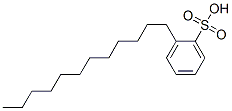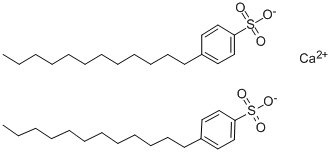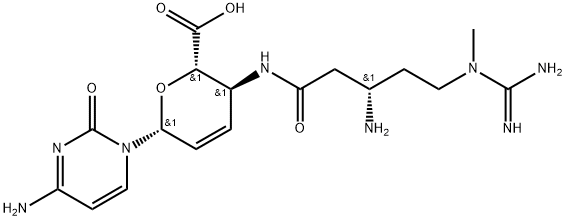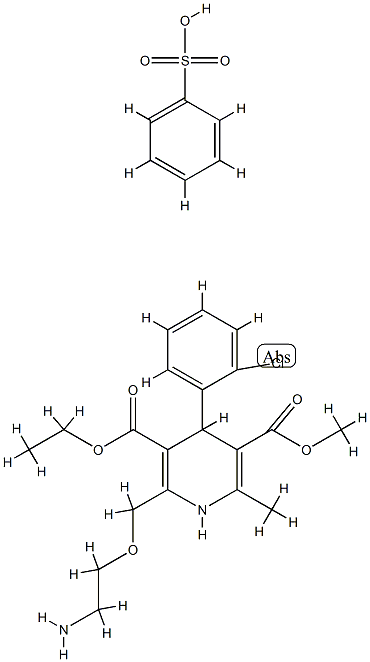Linear alkyl benzenesulphonate
- CAS NO.:42615-29-2
- Empirical Formula: C18H29NaO3S
- Molecular Weight: 0
- MDL number: MFCD00147444
- EINECS: 203-326-3
- Update Date: 2024-12-18 13:37:16
What is Linear alkyl benzenesulphonate?
Chemical properties
Fine, deliquescent needles or large plates. Soluble in water, alcohol; slightly soluble in benzene; insoluble in ether and carbon disulfide.
The Uses of Linear alkyl benzenesulphonate
Manufacturing of phenol, resorcinol, and other organic syntheses, and as a catalyst.
General Description
Fine whitish needles. Solid form may severely irritate skin and eyes. Used to make other chemicals.
Air & Water Reactions
Soluble in water. Mixes with water to form a corrosive solution.
Reactivity Profile
Oxidizing acids are generally soluble in water with the release of hydrogen ions. The resulting solutions have pH's of less than 7.0. Materials in this group react with chemical bases (for example: amines and inorganic hydroxides) to form salts. These neutralization reactions occur as the base accepts hydrogen ions that the acid donates. Neutralizations can generate dangerously large amounts of heat in small spaces. The dissolution of acids in water or the dilution of their concentrated solutions with water may generate significant heat. The addition of water acids often generates sufficient heat in the small region of mixing to boil some of the water explosively. The resulting "bumping" spatters acid widely. These materials have significant ability as oxidizing agents. but that ability varies (for example, from high for nitric acid to low for sulfuric acid and most sulfonic acids). They can react with active metals, including iron and aluminum, and also many less active metals, to dissolve the metal and liberate hydrogen and/or toxic gases. Like other acids, materials in this group can initiate polymerization in certain classes of organic compounds. Their reactions with cyanide salts and compounds release gaseous hydrogen cyanide. Flammable and/or toxic gases are also often generated by their reactions with dithiocarbamates, isocyanates, mercaptans, nitrides, nitriles, sulfides, and weak or strong reducing agents. Additional gas-generating reactions occur with sulfites, nitrites, thiosulfates (to give H2S and SO3), dithionites (SO2), and even carbonates: the carbon dioxide gas from the last is nontoxic but the heat and spattering from the reaction can be troublesome. May often catalyze chemical reactions.
Hazard
Irritant to skin, eyes, mucous membranes.
Health Hazard
TOXIC; inhalation, ingestion or skin contact with material may cause severe injury or death. Contact with molten substance may cause severe burns to skin and eyes. Avoid any skin contact. Effects of contact or inhalation may be delayed. Fire may produce irritating, corrosive and/or toxic gases. Runoff from fire control or dilution water may be corrosive and/or toxic and cause pollution.
Fire Hazard
Non-combustible, substance itself does not burn but may decompose upon heating to produce corrosive and/or toxic fumes. Some are oxidizers and may ignite combustibles (wood, paper, oil, clothing, etc.). Contact with metals may evolve flammable hydrogen gas. Containers may explode when heated.
Properties of Linear alkyl benzenesulphonate
| CAS DataBase Reference | 42615-29-2(CAS DataBase Reference) |
| EPA Substance Registry System | Benzenesulfonic acid, alkyl derivs. (42615-29-2) |
Safety information for Linear alkyl benzenesulphonate
Computed Descriptors for Linear alkyl benzenesulphonate
Linear alkyl benzenesulphonate manufacturer
Khaitan Chemicals & Fertilizers Ltd. (KCFL)
New Products
2-Propanamine, 1-chloro-, hydrochloride (9CI) 3-Pyridineacetonitrile, α-hydroxy- 3-Iodophenylacetic acid 3-(hexyloxy)-4-(pyridin-3-yl)-1,2,5-thiadiazole 2-Hexyn-1-ol Dibenzo-18-crown-6 Strontium Carbonate, 98% Wang resin Sodium hydrogenphosphate, anhydrous 2-Bromo-3-methoxyaniline hydrochloride, 95% (Custom work) 1-Bromo-4-chlorobenzene, 99% Benzocaine, 98% (R)-2-Methylpyrolidine-2-carboxylic acid (De Mepro) Ramipril Sacubitril- Valsartan Boc-his(trt)-OH Fmoc-L-Glu-OtBu Boc-L-Tyr(tBu)-OH Semi carbazide Hydrochloride 1-Ethyl-3-(3-Dimethylaminopropyl)-Carbodiimide Hydrochloride [EDC Hcl] 5-(Difluoromethoxy)-2-Mercaptobenzimidazole 2-Chloromethyl-4-methyl-quinazoline Trans-4-Aminocyclohexanol [4tac] 2-[1-(Mercaptomethyl)Cyclopropyl]Acetic AcidRelated products of tetrahydrofuran








You may like
-
 Alkylbenzenesulfonic acid derivative 98%View Details
Alkylbenzenesulfonic acid derivative 98%View Details
42615-29-2 -
 15761-38-3 N-Boc-L-Alanine >98%View Details
15761-38-3 N-Boc-L-Alanine >98%View Details
15761-38-3 -
 6485-34-3 Saccharin Calcium >98%View Details
6485-34-3 Saccharin Calcium >98%View Details
6485-34-3 -
 Boc-Gly-Gly-Phe-Gly-OH 187764-46-6 >98%View Details
Boc-Gly-Gly-Phe-Gly-OH 187764-46-6 >98%View Details
187764-46-6 -
 (S)-2-Methylpyrrolidine-2-carboxylic acid HCl (MePro) 1508261-86-6 >98%View Details
(S)-2-Methylpyrrolidine-2-carboxylic acid HCl (MePro) 1508261-86-6 >98%View Details
1508261-86-6 -
 Fmoc-Gly-Pro-OH >98%View Details
Fmoc-Gly-Pro-OH >98%View Details
212651-48-4 -
 18568-74-8 >98%View Details
18568-74-8 >98%View Details
18568-74-8 -
 138-41-0 P-Carboxy benzene sulfonamide >98%View Details
138-41-0 P-Carboxy benzene sulfonamide >98%View Details
138-41-0
